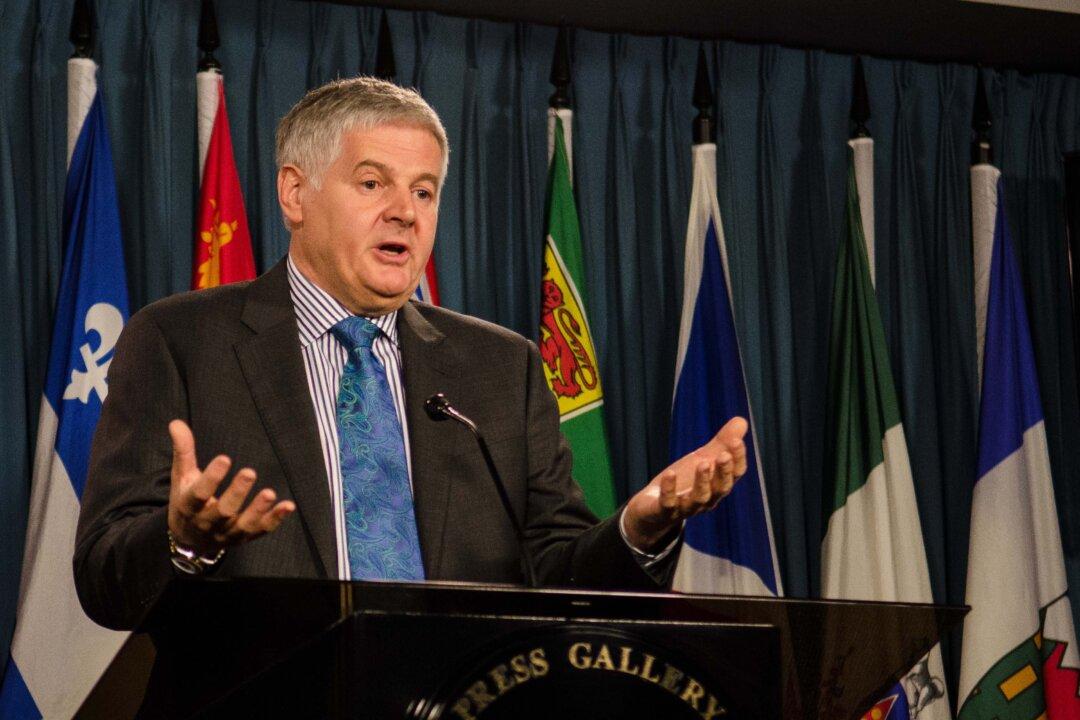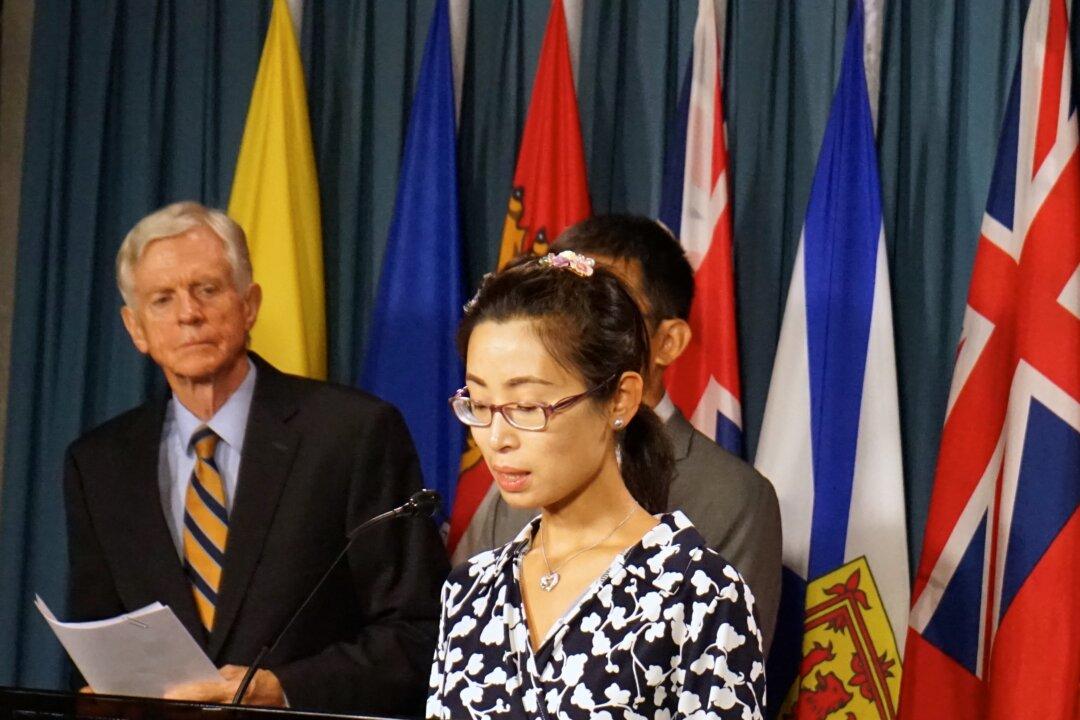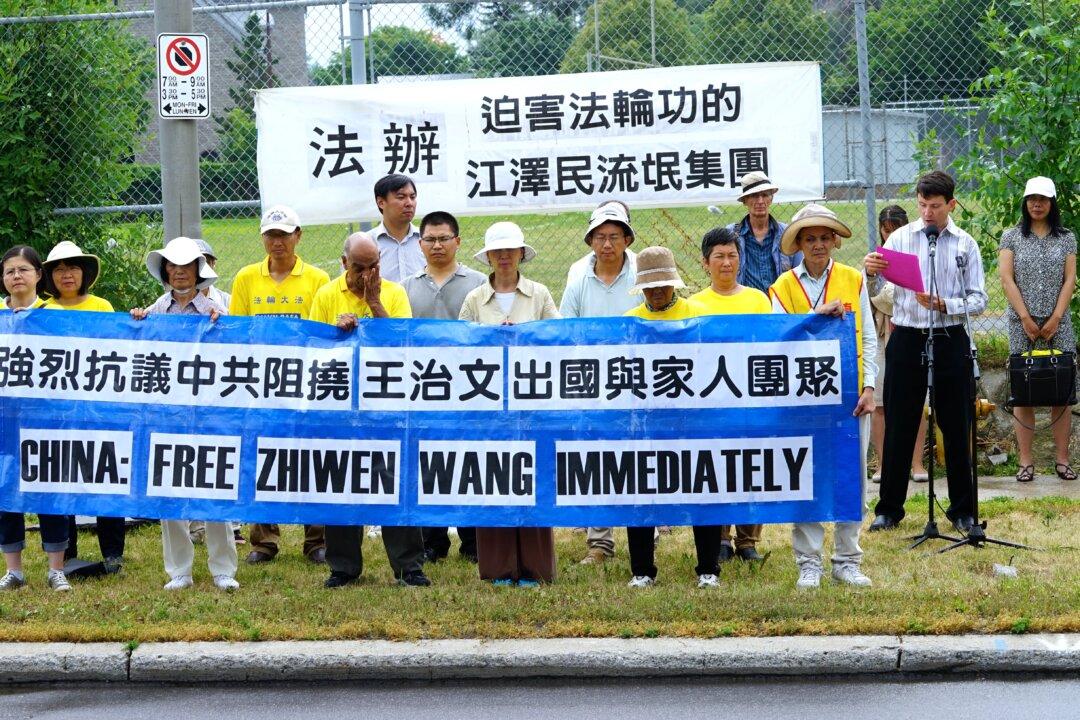OTTAWA—The Royal Society of Canada has given Health Canada a thumbs up on radiation limits from wireless devices and transmitters but said more research is needed around issues such as the link between cancer and wireless airwaves.
In a report released Tuesday, the RSC approved draft revisions to federal guidelines setting safe exposure levels of radiofrequency waves emitted by wireless devices and also cell towers, radio, and TV broadcast antennas.
Critics, however, charge that key evidence of health risks was overlooked when the RSC expert panel reviewed Health Canada’s Safety Code 6 (SC6).
“The report is almost worse than anything we thought,” Frank Clegg, CEO of Canadians for Safe Technology and former president of Microsoft Canada, said at a press conference in Ottawa Tuesday.
“We had hoped that there would be some acknowledgement of the impacts from wireless radiation and a requirement to improve Safety Code 6. Instead what we got is acknowledgement that there might be improvements needed, but let’s go and do more studies.”
He thinks Health Canada needs to act now to increase public safety by introducing more stringent guidelines.
“In my opinion the current guidelines that we’re deploying for wireless devices across Canada is a risky venture and not safe for Canadians.”
Health Canada first established SC6 to protect the public from adverse health effects from radiofrequency (RF) fields in 1991. It updates the guidelines as technology and its effects are established.
According to the report, the RSC panel was asked to determine whether SC6 limits protected Canadians from “established adverse health effects” and whether other health impacts or additional precautions should be considered.
“The Panel has concluded that the balance of evidence at this time does not indicate negative health effects from exposure to RF energy below the limits recommended in the Safety Code,” the report states.
However, given that research on many of these health effects is ongoing, the panel recommended that Health Canada continue to monitor the new literature and “aggressively pursues scientific research aimed at clarifying the RF energy-cancer issue and at further investigating the question of electromagnetic hypersensitivity, in particular.”
Health Concerns
With the increased use of electronic devices there has been an increase in reports and studies on people who feel unwell from the constant exposure to electromagnetic radiation—a condition called electrosensitivity.
Critics like Clegg raise concerns of increased cancer rates, heart problems, children’s safety, electrosensitivity, and other possible negative health effects from exposure to radio waves.
The RSC report recognized these concerns. The panel recommended that Health Canada continue to improve its efforts to inform the public on the issue and “provide practical advice to concerned consumers on how to reduce their personal or their children’s exposure,” as well as how to look at understanding electrosensitivity and ways to treat it.
The report suggested that a process for reporting “suspected disease clusters and a protocol for investigating them” is needed. It encouraged “inclusion of basic education on non-ionizing radiation in the curriculum of Canadian medical schools.”
Clegg said technology will continue to increase and so Canada’s standards need to be “the best that’s possible.” He said information is already available that Health Canada can rely on to form revisions to SC6.
“The Royal Society should be speaking to biologists who have published thousands of peer-reviewed studies documenting adverse affects from non-ionizing radiation, he said.
The RSC says it worked hard to assess all relevant studies it could within the constraints of time and resources.
“While they certainly would not have examined every paper, of the hundreds they did review, they could not identify an established health impact that would justify changing the basic restrictions,” said David B Layzell, chair of the committee on expert panels.
Allegations of Bias
The RSC also rejects Clegg’s allegation that the panel was biased, saying they select their panelists carefully and look for people with “a wide range of analytical and technical skills, open-mindedness and independence to examine the peer reviewed literature and judge whether that literature provides conclusive evidence, one way or another.”
Clegg said the original chair of the panel, Daniel Krewski, had to resign when a CMA Journal article revealed he had an undisclosed industry conflict.
“We know there are other panel members that have similar related conflicts with industry. We requested full disclosure from the Royal Society of all the panel members and all potential conflicts and they refused to give it to us.”
His opinion that Health Canada needs to beef up SC6 is spurred by the fact that school boards and municipal staff have told him how much they rely on SC6 when deciding whether to allow wi-fi on their sites. He said he also hears from people who tell him about their health issues from such radiation.
“We need Health Canada to act now. We believe we’ve got enough science to prove conclusively that Safety Code 6 does not protect Canadians in this environment,” Clegg said.




